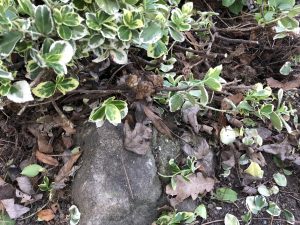Two of my euonymus branches are totally covered with growths like in the picture. Can I save these plants or dig them up?

While it can be a bit difficult to tell the specific cause of the growth from a photo, it is likely that your plant is infected with crown gall, a bacterial disease caused by Agrobacterium tumefaciens. Other bacteria, fungi and insects can cause gall-like growths as well, but euonymus is susceptible to Agrobacterium tumefaciens, which can infect more than 600 plant species, including many ornamental plants such as rose, lilac, hibiscus, viburnum, willow, and flowering cherry.
The bacteria causes the formation of growths or “galls” on stems and roots, which can range from as small as a pebble to several inches across. Galls may start out as smooth and spongy but can become hard and woody overtime.
The location of the gall will determine the impact on the plant. Galls interfere with the movement of water and nutrients throughout the plan. Galls on the main trunk or stalk of a plant will likely eventually kill the plant. Galls on external branches may be more of an aesthetic issue, and plants may thrive for years.
The bacteria that causes crown gall occurs naturally in soil and can sometime persist for years without causing any issues. When a plant is damaged from digging, pruning or insects, the bacteria can enter the plant and lead to the formation of the gall. There are no effective chemical controls for the Agrobacterium tumefaciens bacteria. Prevention includes avoiding bring new plant materials with crown call into your garden, being careful not to damage plants in areas of known infection, and properly disposing of infected material.
You have a couple of options here. If the galls are on secondary branches, you can carefully prune these branches out. Disinfect your pruners in a 20% bleach solution to avoid the spread to other plants. Remember that the bacteria persist in the soil, so there will continue to be a risk of further infection through any wounds.
The other options would be to remove the plant entirely and replace it with another species that is not susceptible to the disease. Some possible replacement options include: barberry, hornbeam, true cedars, ginkgo, golden-raintree, tuliptree, mahonia, spruce, linden, boxwood, catalpa, beech, holly, larch, magnolia, black gum, pine, Douglas-fir, baldcypress, hemlock, birch, firethorn, redbud, smoke tree, sweetgum, deutzia, serviceberry, yellowwood, yew, and Zelkova. Be sure to carefully research any replacement plants or you risk losing new plants to the infection as well.
Whether you choose to prune or to remove the plant entirely, be careful with the disposable of the infected plant material to prevent the spread of the infection. Here are some options to consider when disposing of infected plant material. Contact your local municipality for acceptable options in your area.

